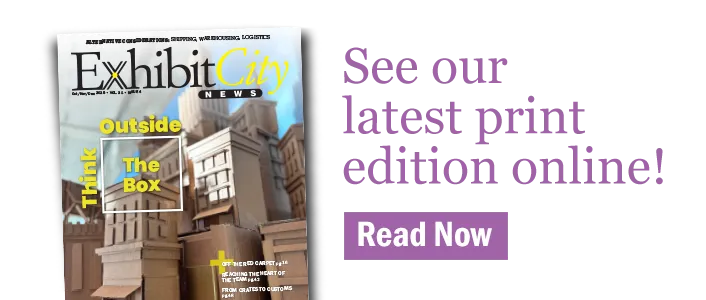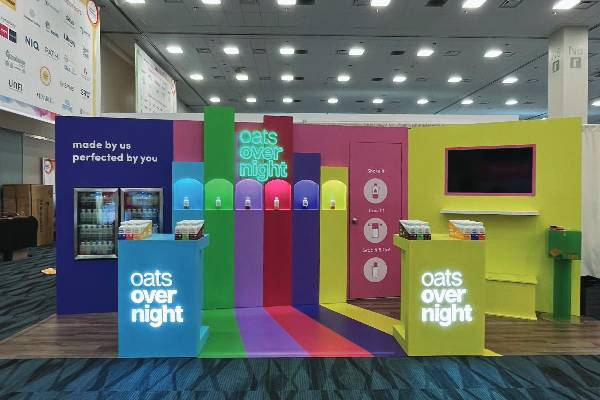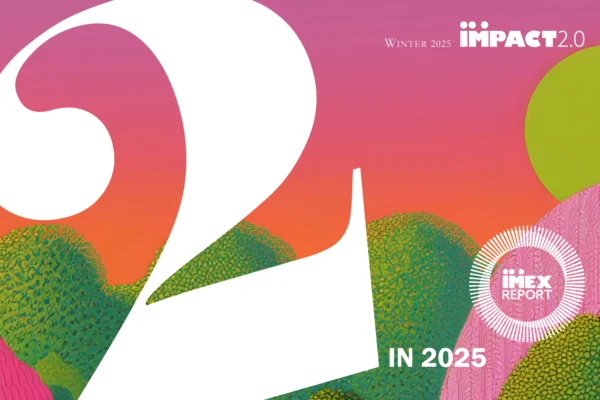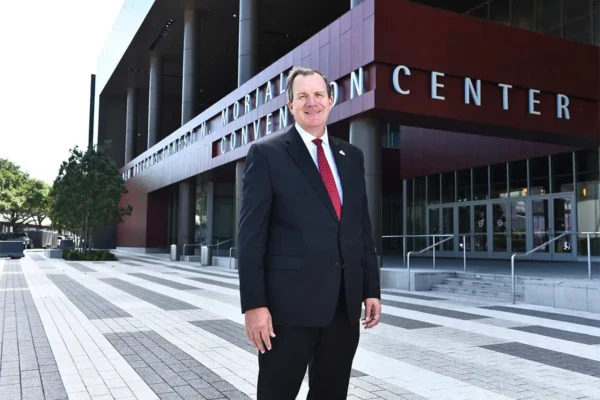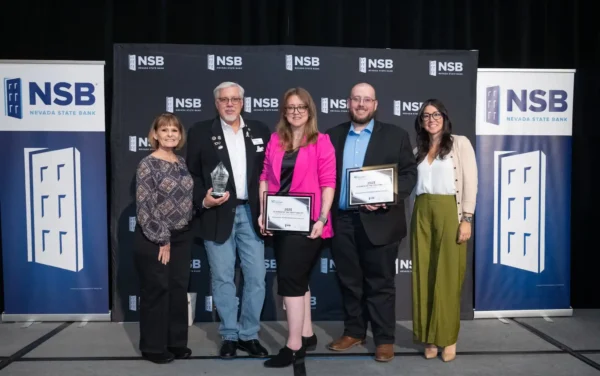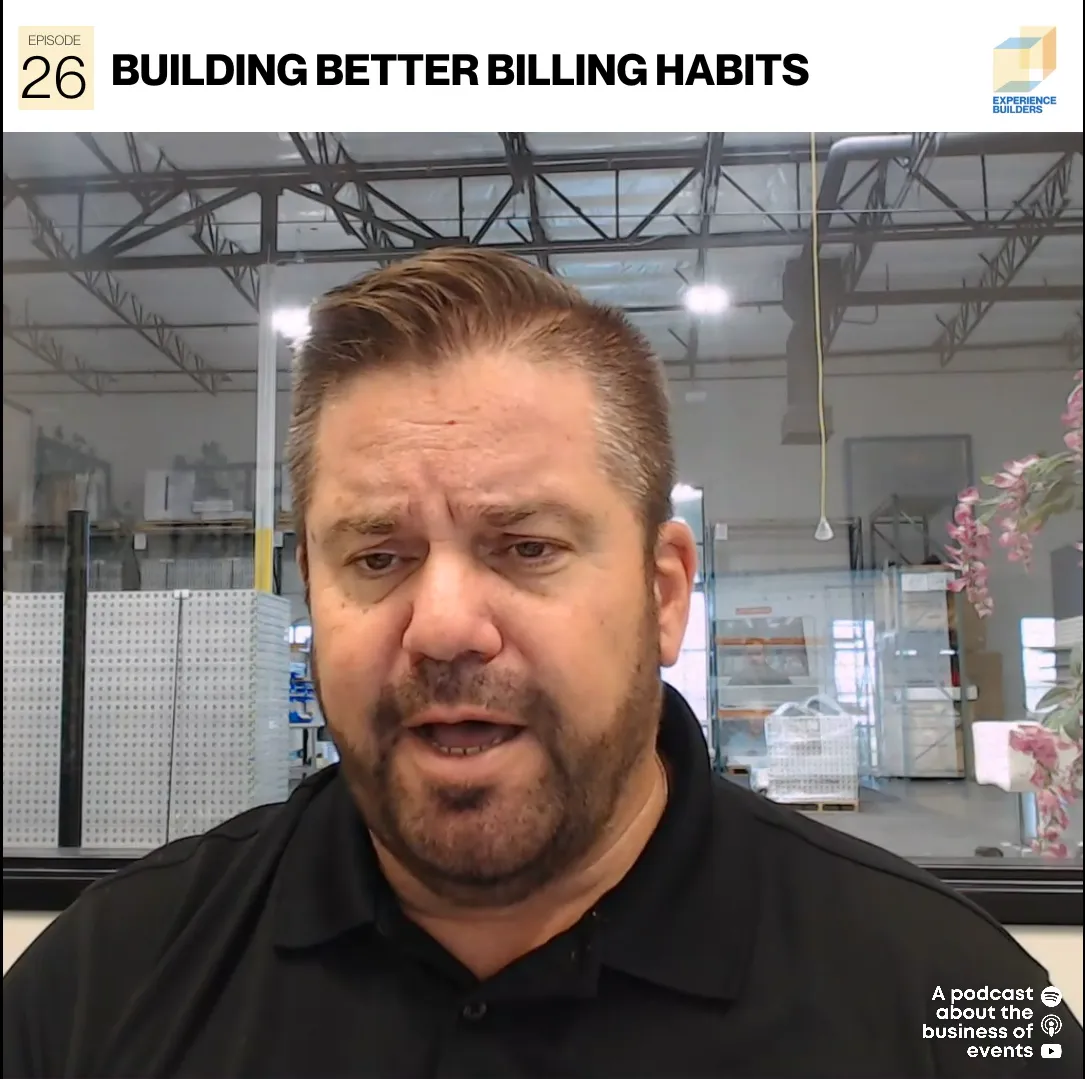For many companies new to showing at tradeshows, a 10 by 10 or 10 by 20 booth can be their entry. They are budget friendly and a nice way to ease into the tradeshow scene. But how to start?
“Focus on your primary reason for exhibiting. Is it a product launch, lead generation or continuing brand awareness,” Matt Jeide, account executive at Captivate Exhibits, a Brookfield, Wisconsin, company with 30 years of experience in tradeshow booth design and fabrication, advises their clients. “All of this can still be accomplished in either an Inline (typically a 10 by 10 or 10 by 20) or even a portable display.”
Joe Anderson, office and IT manager at Highway 85 Creative, a Peoria, Arizona, company says, “The biggest challenge with a small booth is making sure you don’t have a small mindset.” Company policy is to give their clients every chance to push the boundaries of their thinking. “It’s easy to say ‘We’re just a little 10 by 10, there’s no way we can compete with the big guys’ and then not even try. Our founder Guy likes to say, ‘It’s not the size of the dog, but the fight in the dog.’”
They make the challenges of having a 10 by 10 sound more like a combination of strengths, rather trade-offs and compromises. Smaller booths can be easier to set up and budget for. “They’re lighter in weight. Material handling considerations for a smaller display reduces your overall material handling and show service costs. For a first-time exhibitor, this cost can be a bit of a shock, especially if your exhibit house has not properly educated you on the costs associated with the show itself,” Jeide says. “This allows the [exhibitor] the flexibility to set up their own display, if they want to. A larger display can lead to additional labor costs.” And a 10 by 10 or 10 by 20 does not hamper getting attention.
But how can an exhibitor go about getting that attention? “Anything,” Anderson says. “That can be the graphics, LED panels or other tech, games, guests, snacks/drinks, awesome giveaways, etc. Anything that will grab attention and then give people a reason to stand at your booth a few seconds longer than they would have otherwise gives your team a chance to start a convo and draw them in.”
But don’t just throw out swag, give a little thought to what you’re giving out, and what it can do for people. “Swag can definitely draw people in,” Anderson says, “as long as you’re not giving out the same bottle openers, stress balls and little pieces of candy as everyone else, which is going to end up in the trash anyway. If you’re going to spend money on stuff to give away, make sure it’s something people will use again and again that also happens to have your name on it.” Highway 85 also says,“Snacks are great, who doesn’t want free food, right?” Provide a bit of a service!
Highway 85 isn’t afraid of fun and games either. “We’ve had clients with small booths do Dance Dance Revolution tournaments, have their entire backwall be an LED screen, and serve all kinds of treats. A few years ago, we even turned our own 10 by 20 booth into a podcast studio and recorded live on the show floor.”
That much fun could lead to crowd issues, however. Jeide stresses, “Traffic flow in and around your smaller space is still a key consideration. Crowding your booth with too many employees or attempting to cram too much into a smaller space limits customer engagement and can cause your visitors to spend less or no time in your booth.” Location matters, too. “An exhibitor can generate traffic to their booth by locating themselves in proximity to key event areas, whether that be a larger exhibitor or a higher traffic area at the venue itself.” So be ready to control flow, and get an idea of what your flow will be like even before the show starts.
And 10 by 10 or 10 by 20 booths have a flexibility that allows growth. “With advances in lighter weight designs, exhibitors have the ability to integrate technology into even a smaller exhibit space,” says Jeide. “Trends in lighter weight monitors and touch screen technology allow for clients to promote their display space without having a larger physical footprint.” Jeide adds, however, “A properly designed display can be incorporated into a larger space where additional components can be rented from the exhibit house to increase the size of the display for different shows once the exhibitor is ready to make that leap to a larger space.” A well designed 10 by 10 isn’t the end of design space, it is just the beginning.
Finding exhibit houses that embrace 10 by 10 booths is definitely a worthwhile quest. Both Captivate Exhibits and Highway 85 Creative embody that. Captivate refuses to be intimidated by the smaller footprint. “Bottom line, you don’t need a large display to make a lasting impact on your clients and your presence at your next tradeshow.”
And Highway 85 relishes working with a creative client. “We like working with clients that are on the more fun/creative side who want to do things differently than everyone else … we get our hands dirty & create cool shit. Together.”
Get your hands dirty and make cool stuff, and you’ll make a lasting impact at your next tradeshow.



